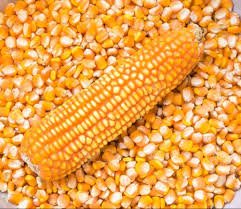Maize Hit by Its Own: How Ethanol Changed the Destiny of Corn in India
14-Jun-2025 07:49 PM

Maize Hit by Its Own: How Ethanol Changed the Destiny of Corn in India
Once merely used as direct feed in poultry and animal husbandry, maize (corn) has now become a crucial component of India’s agricultural economy. The market was functioning in a fairly routine manner until the government’s vision of ethanol blending in petrol came into focus—an event that completely altered the script.
Around a decade ago, maize was selling for less than ₹1000 per quintal. But when the government approved the use of maize for ethanol production, its price soared to as high as ₹2700 per quintal. The golden era attracted traders, stockists, and investors into the maize trade, creating a frenzy in the market.
Now, India is witnessing record maize production for the third consecutive year. Many traders have stockpiled maize, hoping that prices will spike again. However, the gamble is becoming increasingly risky. Ethanol is no longer being made solely from maize—it is now also derived from sugarcane and rice.
A by-product of ethanol production from maize, DDGS (Distillers Dried Grains with Solubles), has emerged as a cheaper and protein-rich feed alternative for the livestock industry. The wide availability of DDGS is rapidly reducing the demand for raw maize itself.
Today, maize has transformed into the “yellow gold” that was once ignored. Ironically, it is now facing reduced demand due to its own by-product—bringing to life the saying: Iron cuts iron. In this case, maize is being undercut by maize.
Adding to the uncertainty, the United States is pressuring India to begin importing maize for ethanol production. India’s policy think tank, NITI Aayog, is reportedly considering the proposal.
If this happens, it could further shatter the dreams of domestic maize farmers and traders who are still holding out hope for high prices.
